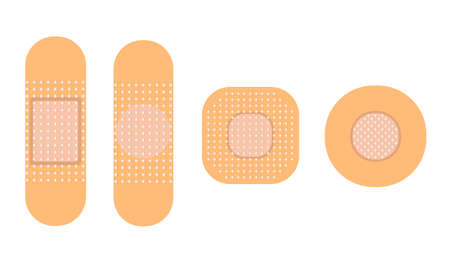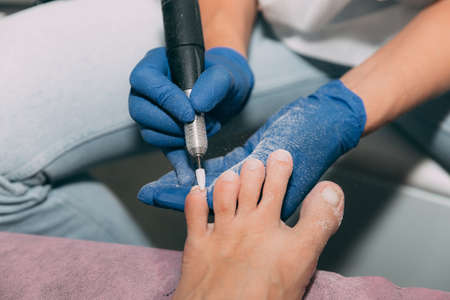Understanding Laser Skin Resurfacing for Acne Scars
Acne scars can be a frustrating reminder of past breakouts, but laser skin resurfacing offers an effective way to reduce their appearance. This treatment works by using laser technology to remove damaged skin layers and stimulate collagen production, leading to smoother, healthier-looking skin.
How Does Laser Skin Resurfacing Work?
Laser skin resurfacing uses focused beams of light to target the top layer of the skin while stimulating deeper layers to promote healing and new cell growth. There are two main types of laser treatments:
| Type of Laser | Description |
|---|---|
| Ablative Lasers | Remove the outer layer of skin (epidermis) and heat the underlying layer (dermis) to stimulate collagen production. Examples include CO2 and Erbium lasers. |
| Non-Ablative Lasers | Penetrate deeper into the skin without removing the top layer, promoting collagen growth with minimal downtime. Examples include fractional lasers. |
Why Is It Effective for Acne Scars?
The reason laser resurfacing is so effective for acne scars is that it directly addresses both surface irregularities and deeper scar tissue. By removing damaged skin and encouraging collagen regeneration, this treatment helps smooth out uneven textures and reduces discoloration. Over time, patients notice a more even complexion and improved skin tone.
Key Benefits of Laser Skin Resurfacing
- Smoother Skin Texture: Helps reduce roughness caused by acne scars.
- Stimulates Collagen Production: Encourages natural healing for long-term improvement.
- Reduces Hyperpigmentation: Lightens dark spots left by acne breakouts.
- Minimally Invasive: Compared to surgical procedures, laser resurfacing requires less recovery time.
2. Types of Laser Treatments for Acne Scars
When it comes to laser skin resurfacing for acne scars, different laser technologies target scars in unique ways. Understanding these options can help you choose the best treatment for your skin type and scar severity.
CO2 Lasers
CO2 lasers are one of the most powerful options for treating deep acne scars. They use high-energy beams to remove layers of damaged skin, promoting collagen production and new skin growth. While effective, CO2 lasers typically require a longer recovery time due to their intensity.
Erbium Lasers
Erbium lasers offer a gentler alternative to CO2 lasers. They target the outer layers of the skin with less heat, making them a good choice for those with moderate acne scars or sensitive skin. Erbium laser treatments usually result in a shorter healing time compared to CO2 lasers.
Fractional Lasers
Fractional lasers work by creating microscopic wounds in the skin while leaving surrounding tissue intact. This stimulates collagen production without completely removing layers of skin, leading to faster recovery times. Fractional laser treatments can be either ablative (removing layers of skin) or non-ablative (stimulating collagen without removing skin).
Comparison of Different Laser Treatments
| Laser Type | Best For | Downtime | Main Benefit |
|---|---|---|---|
| CO2 Laser | Severe acne scars | 7-14 days | Deep skin resurfacing |
| Erbium Laser | Moderate acne scars | 5-7 days | Milder treatment with less heat damage |
| Fractional Laser | Mild to severe acne scars | 3-7 days | Faster recovery and collagen stimulation |
Which Laser Treatment is Right for You?
The right laser treatment depends on your skin type, scar severity, and how much downtime you’re comfortable with. A consultation with a dermatologist or laser specialist can help determine the best option based on your individual needs.

3. What to Expect During the Procedure
If youre considering laser skin resurfacing for acne scars, knowing what happens during the procedure can help ease any anxiety and ensure youre well-prepared. Here’s a step-by-step guide on what to expect during your session.
Step 1: Preparation
Before the laser treatment begins, your provider will prepare your skin to ensure optimal results. This may include:
- Cleansing: Your skin will be thoroughly cleaned to remove any makeup, oil, or dirt.
- Numbing Cream: A topical anesthetic may be applied to minimize discomfort. In some cases, a local anesthetic injection may be used.
- Protective Gear: You’ll be given protective eyewear to shield your eyes from the laser light.
Step 2: The Treatment Process
The actual laser procedure is relatively quick and varies based on the size of the treatment area. Here’s what you can expect:
| Stage | What Happens |
|---|---|
| Laser Application | The provider moves the laser device over the targeted areas, delivering controlled energy to remove damaged skin layers. |
| Sensation | You may feel warmth or a mild stinging sensation, similar to a rubber band snapping against your skin. |
| Treatment Duration | A session typically lasts between 30 minutes to an hour, depending on the extent of the treatment. |
Step 3: Pain Management During the Procedure
Pain levels vary from person to person, but most people tolerate the procedure well with minimal discomfort. Some ways pain is managed during treatment include:
- Numbing Agents: As mentioned earlier, topical numbing creams help reduce sensitivity in the treated area.
- Cooling Devices: Some lasers come with built-in cooling technology to soothe the skin during treatment.
- Mild Sedation (if needed): For deeper resurfacing treatments, your provider may offer mild sedation or pain-relief options.
The entire process is designed to be as comfortable as possible while ensuring effective results for smoother, rejuvenated skin.
4. Recovery and Aftercare Tips
After undergoing laser skin resurfacing for acne scars, proper aftercare is crucial to achieving the best results. Understanding the healing process, managing common side effects, and following essential skincare tips will help you recover smoothly.
Understanding the Healing Process
Your skin will go through several stages of healing after the procedure. Initially, you may experience redness, swelling, and a slight burning sensation. Over time, the outer layer of your skin will peel away, revealing new and healthier skin underneath.
| Healing Stage | What to Expect |
|---|---|
| First 24-48 Hours | Redness, swelling, and mild discomfort similar to a sunburn. |
| Days 3-7 | The skin may start peeling or flaking as it regenerates. |
| Week 2 | The new skin becomes more visible, but mild pinkness may remain. |
| Weeks 3-4 | The skin tone evens out, and results become more noticeable. |
Common Side Effects and How to Manage Them
Redness and Swelling
This is normal after laser treatment. Applying a cold compress and keeping your head elevated can help reduce swelling.
Dried or Peeling Skin
Avoid picking at peeling skin. Instead, use a gentle moisturizer to keep your skin hydrated.
Sensitivity to Sunlight
Your skin will be more sensitive to UV rays. Always wear sunscreen with SPF 30 or higher and avoid direct sun exposure.
Essential Skincare Tips for Best Results
- Avoid Harsh Skincare Products: Refrain from using exfoliants or strong acids like retinol until your skin has fully healed.
- Stay Hydrated: Drink plenty of water to support your skin’s natural healing process.
- No Picking or Scratching: Let your skin heal naturally to prevent scarring or irritation.
- Follow Your Doctor’s Instructions: Use any prescribed ointments or medications as directed for optimal recovery.
If you notice excessive redness, pain, or signs of infection, contact your dermatologist immediately to ensure proper care.
5. Results and Long-Term Benefits
Laser skin resurfacing can significantly improve the appearance of acne scars, but results take time to fully develop. Understanding when to expect visible changes and how to maintain your results can help you get the most out of your treatment.
When Will You See Results?
The timeline for noticeable improvements varies based on the type of laser used and your skin’s healing process. Here’s a general guideline:
| Time After Treatment | What to Expect |
|---|---|
| First Few Days | Redness, swelling, and mild discomfort; skin starts healing. |
| 1-2 Weeks | Peeling and flaking as new skin emerges. |
| 3-4 Weeks | Smoother texture, reduced redness, early signs of scar improvement. |
| 3-6 Months | Significant reduction in scars, more even skin tone. |
| 6-12 Months | Full results visible as collagen production continues. |
How Long Do the Effects Last?
The effects of laser resurfacing are long-lasting, but they are not permanent. Since aging and environmental factors continue to affect your skin, maintaining results requires proper care. Most people enjoy smoother skin for several years before considering additional treatments.
Tips for Maintaining Smooth, Scar-Free Skin
A good skincare routine helps extend the benefits of laser resurfacing. Follow these tips:
- Use Sunscreen Daily: Protecting your skin from UV damage prevents pigmentation issues and prolongs results.
- Mild Cleansing & Moisturizing: Keep your skin hydrated and avoid harsh products that can irritate newly treated areas.
- Avoid Picking or Scratching: Let your skin heal naturally to prevent new scarring.
- Follow Post-Treatment Care: Adhere to any specific aftercare instructions given by your provider.
- Consider Maintenance Treatments: Some people benefit from touch-up sessions every few years for optimal results.


